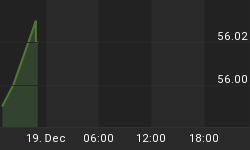The "economy stupid" has always been of concern to most Americans. But now as never before has it become nearly all-encompassing as it is heavily watched on almost a daily basis by millions. The economy and financial markets are now topics commonly discussed at the corner coffee shop the way sports and weather used to dominate the conservation.
With this new-found obsession with the condition of the economy, America has been slowly educated in the realities of the business cycle. Many fell victim to the heavy downturn, first in the stock market and later in the economy, in 2000-2002 without knowing what hit them until after the fact. Had they known that the well-established 4-year business (a.k.a., Presidential) cycle was one of the main culprits, they would have perhaps been better prepared to deal with the contraction of business conditions.
To that end, Lakshman Achuthan and Anirvan Banerji of the Economic Cycle Research Institute (ECRI) have made an important contribution to a broader understanding of the business cycle and its effects on the U.S. economy and financial markets. In their recently published book, Beating the Business Cycle (Doubleday, 198 pages, hardcover), these renowned business cycle forecasters reveal some of the methods that has enabled ECRI to accurately forecast the last several recessions in the U.S. before most other economists. The book discusses the importance of being able to correctly anticipate downturns and upturns in the economy and in various economic sectors (depending on your profession) and how an individual or business can make these forecasts using ECRI's time-tested methods.
The authors begin with a discussion of recent periods of inflation and deflation, recessions and booms in the U.S. economy and what led to the common failure of classical econometricians to predict these rises and falls in business activity. They also explain how ECRI, through its unique and extensive series of indicators, was able to call the turns in business activity before they happened. They detail the enviable track record of the institute over the past decade as well as the true underlying causes of each recession and boom, causes which mainstream economics wasn't able to isolate.
The real meat between the cover, so to speak, is the explanation of two of ECRI's main proprietary indicators, the Weekly Leading Index (WLI) and the Future Inflation Gauge (FIG). WLI predicts upswings and downswings in U.S. economic activity, while FIG shows the rate of change in inflationary pressures. Both indicators have an impressive track record and are the main staples the institute's so-called "economic dashboard" of indicators that enable them to accurately forecast economic turns in the U.S. economy. You may have heard of the WLI as it is shown each week in Business Week magazine. ECRI also makes this index, along with FIG, available at its web site at www.businesscycle.com.
WLI and FIG have been known to consistently outperform the other leading economic indexes, and a long-term comparison of WLI versus the Conference Board leading indicator was made in the book. WLI won hands down, predicting several downturns in economic performance before the Conference Board indicator did on several occasions. A comparative analysis of FIG versus the CPI Inflation index showed a similar result.
The authors emphasize the importance of using the "three P's" when it comes to making economic forecast. In Beating the Business Cycle, they explain that in order to get a correct reading on a shift in the economy (from up to down, or from down to up) the change in the indicators must be Pronounced, Persistent, and Pervasive. See page 138 for an explanation of this important concept.
The authors cover at length the fallacies of the "New Era" economy of the mid-to-late '90s and show, using ECRI's own indicators from that time, why the dot.com bubble was doomed to burst and why the so-called "New Era" was likewise unsustainable. If for no other reason, it makes for an enlightening perspective of recent market history.
The authors do not seem to rely on economic cycles with fixed durations (e.g., the 4-year cycle). Instead they maintain that broad economic cycles are dynamic and must be treated as such. They assert that the central failing of today's economists is that they treat economic as a science much like physics, where a theory is posited and then an attempt is made to prove it using mathematical and scientific formulae. They insist that such attempts to treat economics as a rigid science will always fail, and that instead of the rigid approach econometricians must base theories on observation first and foremost and must be ready at any time to be flexible in their approach since the economy is always changing. This evidently is what distinguishes the ECRI approach from most other mainstream economic analysts.
One of the most valuable contributions the book makes, in my opinion, is found in Chapter 9, titled "What Do I Do? Real Life Scenarios." The authors go down a list of occupations and personal economic situations that ordinarily individuals and small business owners might face in today's world. They show how using WLI and FIG in tandem can be used for profitable application of a variety of personal economic problems. This chapter is worth the cost of the book.
I would recommend Beating the Business Cycle to serious students of economics, business owners, stock market traders, or for individuals who want an extra leg-up on surviving and prospering in today's fast-paced economy. The authors have done a fairly good job of tailoring the book so that it can be applied by a person of almost any profession or level of education. Definitely one of the more readable books in modern economic literature. Beating the Business Cycle is available at your local book store or from online book retailers such as Amazon.com.
















